
Trachypepla semilauta is a moth of the family Oecophoridae and was first described by Alfred Philpott in 1918. It is endemic to New Zealand and has been collected in Southland. This species inhabits southern beech forest on the side of mountains. Adults are on the wing in January.
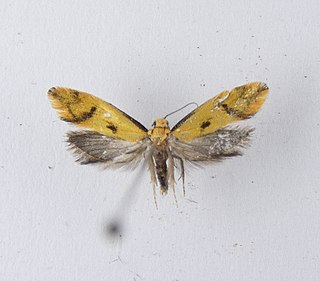
Tingena actinias is a species of moth in the family Oecophoridae. It is endemic to New Zealand and is found on the North and South Islands. The larvae of this species are leaf litter feeders. The preferred habitat of this species is shrubland and it has also been observed in gumland heaths and in beech forest.

Tingena afflicta is a species of moth in the family Oecophoridae. It is endemic to New Zealand.
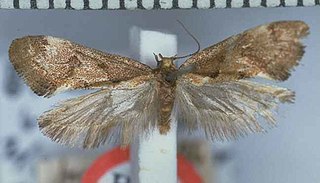
Tingena brachyacma is a species of moth in the family Oecophoridae. It is endemic to New Zealand and has been found in the south of the South Island. This species inhabits open swamps, native forest and scrubland and has been collected amongst Leptospermum. The adults of the species are on the wing in November and December.

Tingena clarkei is a species of moth in the family Oecophoridae. It is endemic to New Zealand and has been observed in the North and South Island. This species is on the wing from November until February and inhabits open scrubland or native forest. This species is similar in appearance to Trachypepla photinella.
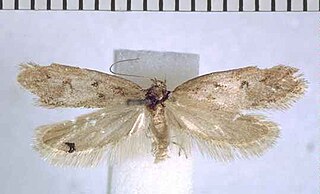
Tingena honesta is a species of moth in the family Oecophoridae. It is endemic to New Zealand and can be found in the South Island.
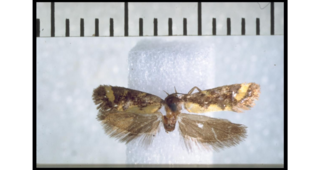
Tingena honorata is a species of moth in the family Oecophoridae. It is endemic to New Zealand and has been observed in the South Island including in Fiordland, Southland and Otago. This species has inhabits damp openings in native forest. The adults of this species are on the wing in December and January and are attracted to light.

Tingena letharga is a species of moth in the family Oecophoridae. It is endemic to New Zealand and has been observed in Otago. Adults are on the wing in December and January.
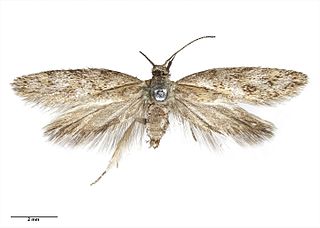
Tingena levicula is a species of moth in the family Oecophoridae. It is endemic to New Zealand.

Tingena monodonta is a species of moth in the family Oecophoridae. It is endemic to New Zealand and has been found in both the North and South Islands. This species inhabits native beech forest at altitudes of between 2500 - 3000 ft. The adults of the species are on the wing from November and December.

Tingena morosa is a species of moth in the family Oecophoridae. It is endemic to New Zealand and has been found in the South Island in Nelson including at the Dun Mountain and in the Canterbury region. This species inhabits native forest at altitudes from 2000 to 3000 ft. Adults of this species are on the wing in December.

Tingena opaca is a species of moth in the family Oecophoridae. It is endemic to New Zealand and has been observed in the southern parts of the South Island. Adults of this species are on the wing in December.
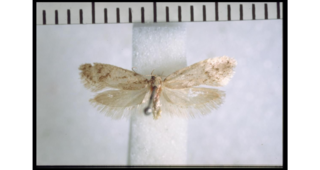
Tingena pallidula is a species of moth in the family Oecophoridae. It is endemic to New Zealand and has been collected in the Nelson and Tasman regions. Adults of this species are on the wing in February and have been collected by beating undergrowth.

Tingena penthalea is a species of moth in the family Oecophoridae. It is endemic to New Zealand and has been observed in Wellington and the Tararua Range. The adults of this species are on the wing from December until February.
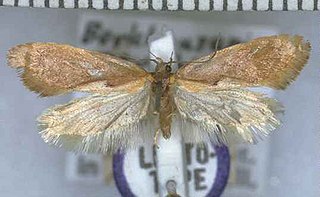
Tingena perichlora is a species of moth in the family Oecophoridae. It is endemic to New Zealand and has been observed in the southern parts of the South Island. This species appears to inhabit manuka scrub. Adults of this species are on the wing from October to January.

Tingena pronephela is a species of moth in the family Oecophoridae. It is endemic to New Zealand and is found in the southern parts of the South Island. The species inhabits the outskirts of scrub and native forest. The adults of this species are on the wing from October to February.

Tingena serena is a species of moth in the family Oecophoridae. It is endemic to New Zealand and has been observed in Southland and Dunedin. The adults of this species are on the wing in December and January.
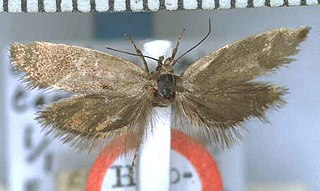
Tingena tephrophanes is a species of moth in the family Oecophoridae. It is endemic to New Zealand and has been found at Mount Arthur. Adults of this species are on the wing in January.

Tingena vestita is a species of moth in the family Oecophoridae. It is endemic to New Zealand and has been collected in Fiordland. The adults of this species are on the wing in January.
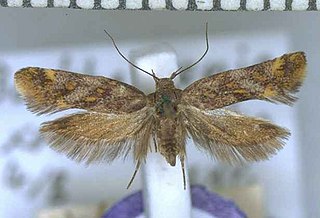
Tingena xanthomicta is a species of moth in the family Oecophoridae. It is endemic to New Zealand and has been found in both the North and South Islands. This species inhabits native scrub on hillsides and appears to be attracted to Coprosma areolata. Adults are on the wing from November until February.





















